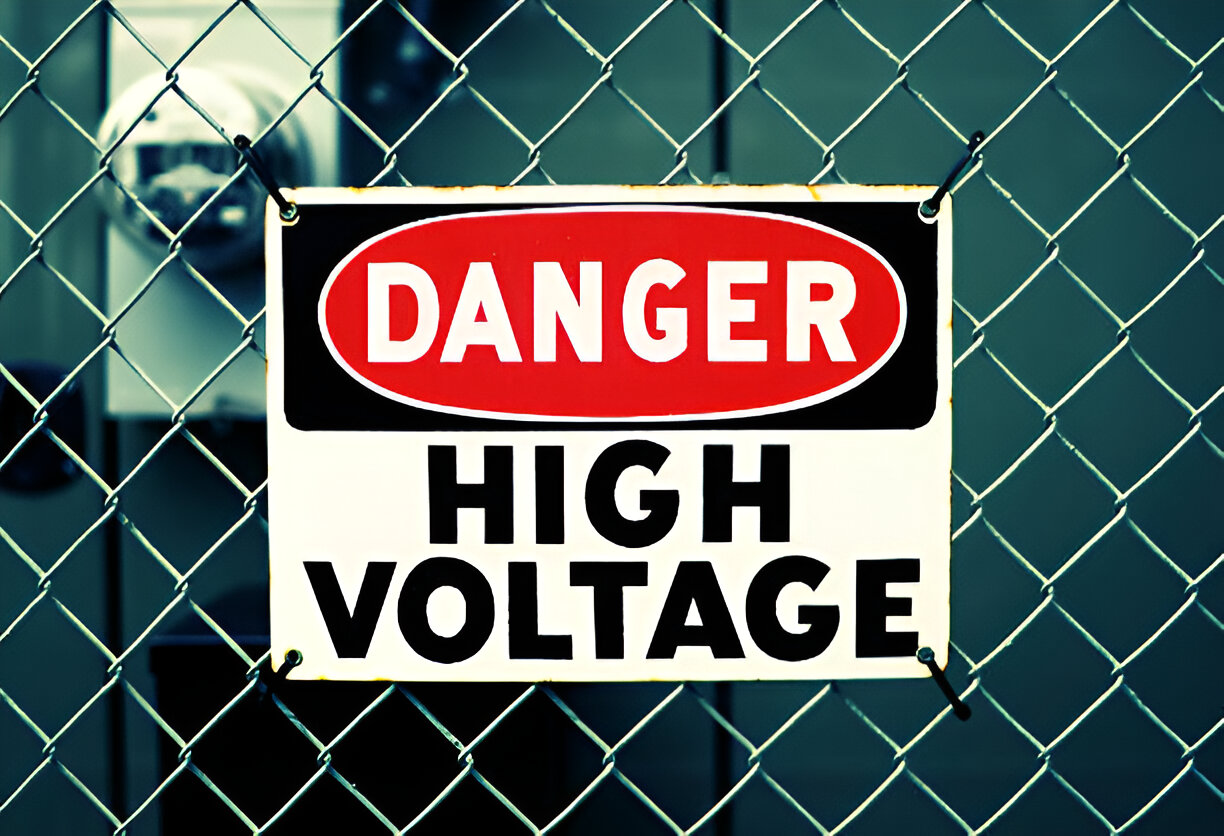
What Is a Hazardous Voltage in the UK? Hazardous voltage refers to electrical potentials exceeding 50 volts AC or 120 volts DC, which can pose serious risks such as severe burns or fatal injuries. Understanding these thresholds and the dangers associated with them is crucial for maintaining safety in environments where such voltages are present. This guide explains the risks and safety measures to protect against hazardous voltage exposure.
Defining Hazardous Voltage
Hazardous voltage refers to any electrical potential high enough to pose a risk of shock or other injuries to individuals. Understanding voltage classification is critical as you navigate hazardous conditions in various environments.
Generally, voltages over 50 volts AC or 120 volts DC are considered hazardous, but the exact thresholds can vary depending on specific regulations and applications.
You must recognize that different settings require different safety measures. Industrial sites might encounter higher voltage thresholds and thus demand more stringent safety protocols compared to residential areas.
Mastering these classifications isn’t just about compliance; it’s about ensuring every precaution is taken to mitigate risk. Stay informed about the specific voltage levels considered hazardous in your field to enhance safety and operational efficiency.
UK Electrical Safety Standards
In the UK, stringent electrical safety standards are meticulously enforced to protect you from the dangers of hazardous voltages. These regulations ensure that all electrical installations adhere to high safety compliance criteria designed to minimize risk and enhance protection.

What Is a Hazardous Voltage in the UK?
You’re required to comply with the Wiring Regulations, which cover the design, installation, operation, and inspection of electrical systems. This framework is crucial in preventing accidents and ensuring operational integrity.
Regular inspections and mandatory testing are part of these protocols, aiming to detect any potential failures early. As a professional, your adherence to these standards not only safeguards your projects but also maintains public trust in electrical safety practices.
Staying informed and compliant is your responsibility and is pivotal in this field.
Voltage Thresholds for Safety
Understanding the specific voltage thresholds critical for safety is essential, as exceeding these limits can pose serious risks.
You must familiarize yourself with various voltage types, notably alternating current (AC) and direct current (DC), each with distinct safety thresholds. In the UK, any voltage over 50 volts AC or 120 volts DC is generally considered hazardous.
Compliance with these parameters isn’t just regulatory; it’s a fundamental aspect of electrical safety management.
To navigate these voltage thresholds safely, use appropriate safety equipment, including insulated tools and personal protective equipment. This gear is vital in safeguarding against unintended contact with high voltage, ensuring you adhere to safety standards while preventing potential hazards effectively.
Risks of High Voltage Exposure
After familiarizing yourself with the voltage thresholds for safety, it’s important to recognize the risks associated with high voltage exposure.

High voltages can cause severe electrical injuries, including burns, cardiac arrest, and neurological damage. These risks underscore the necessity for precise voltage detection and continuous monitoring techniques in environments where high-voltage systems are present.
Without proper detection methods, you’re exposed to unseen dangers that could result in fatal incidents or long-term health issues. Understanding these risks isn’t just about avoiding immediate harm; it’s about ensuring sustained safety through adherence to rigorous safety standards and practices.
Always approach high-voltage environments with the respect and caution they demand to mitigate potential hazards effectively.
Protective Measures and Regulations
To effectively safeguard against the dangers of high voltage, stringent protective measures and regulations are crucial. You’ll need to familiarize yourself with the standards set by the UK Health and Safety Executive (HSE) that mandate comprehensive safety training and the use of certified protective equipment. Here’s a breakdown of the key components:
| Aspect | Description |
|---|---|
| Protective Equipment | Required gear includes insulated gloves, dielectric boots, and arc flash suits. |
| Safety Training | Comprehensive programs cover risk assessment, emergency procedures, and proper equipment usage. |
| Regulatory Compliance | Adherence to Electricity at Work Regulations 1989 and updates from HSE guidelines. |
These measures aren’t just recommendations; they’re your first line of defense in maintaining a safe working environment amidst hazardous voltages.
Case Studies and Real-World Examples
Why should we examine case studies involving hazardous voltages?
Delving into real-world examples offers you a deeper understanding of the dire consequences that can follow when safety protocols aren’t strictly adhered to.
Consider an industrial accident where inadequate safety training led to a fatal electrocution.
This tragic event highlights the critical need for comprehensive safety training and the enforcement of stringent safety measures.
Conclusion
In conclusion, you must adhere strictly to the UK’s electrical safety standards to prevent risks associated with hazardous voltages. Remember, voltages over 50 volts AC or 120 volts DC are considered hazardous and can cause serious harm. Ensure you implement and follow comprehensive safety measures and regulations to protect yourself and others. Always stay informed through case studies and real-world examples, which offer valuable insights into effective compliance and prevention strategies in electrical safety.
About the Author: LandlordCertificate
Related Posts
Get Social
Recent Posts
- Fire Alarm Installation as a Foundation for Stronger Property Protection
- Properties That Must Hold a Valid Fire Safety Certificate
- How a Fire Risk Assessment Shapes Stronger Safety Decisions
- Why Every Property Requires a Valid Gas Safety Certificate
- EICR Testing and Property Safety Overview Guide for Building













